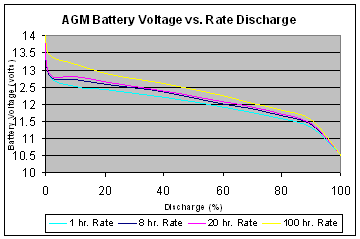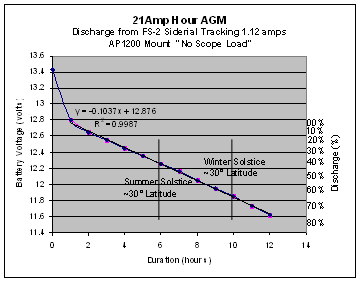Bringing another Telescope Mount
To Field Ready Condition
So I purchased a used Astro-Physics AP1200 QMD in September 2007. This is an older model that had been pampered by its owner then replaced with a newer AP1200GTO version.
I met the prior owner by chance down a dirt road in the southern Sierras at one of the summer dark sky sites I frequent. Not that these sites are remote but in the more than four years I have been frequenting them I have only come across a hand full of people and amateur astronomers twice. For the past two years same the same group of amateurs has broken the usual solitude with good music and good company.

It was Mike’s first trip back to the southern Sierras in more that a decade and his first time in the field with his new AP1200 GTO mount. We were both shocked by the chance meeting and after some discussion were delighted that the old mount would have a new home.
Mike was upfront and warned me that Astro-Physics would not support the retrofitting of the mount to a GTO version. He didn’t want to take the risk of updating the mount with third party hardware, and had therefore decided to purchase the new one.
Undaunted I call Astro-Physics and ask for an upgrade anyway. The good people at Astro-Physics have made some significant improvements to the design and manufacture of the new AP1200 GTO mount and the older ones are “not up to the upgrade”. While not exactly the warm reception I’d hoped for it is ok I am out in the cold and on my own alot with this hobby, something I have learned to enjoy, so I'll make adjustments where needed.
A quick web search yielded a few potential solutions to the AP1200 QMD “Go To” adaptation; the Losmandy Gemini system and an FS-2 system from Astro-Electronic were most strongly considered.
I have used the Gemini system for years on the Losmandy G-11 mount and am happy with its function and efficient construction. The only issues I have had are an optical encoder failure, cable failure, and servo motor circuit board breaking. While this sounds like a lot the cable and circuit board failures were of my doing and were easily field repaired. These I consider normal wear and tear, as this system has seen considerable use at remote locations and only once let me down. It was during this September’s imaging session that the RA optical encoder read head failed, making recovery in the field impossible. Back home it was easy enough to fix with a replacement optical encoder. I purchased a new replacement servo as well, so I now have a field ready spare. This is the only night of imaging I have missed in six years due to Losmandy equipment; I wish the weather was that reliable.
So why consider something other than the Losmandy Gemini for the AP1200QMD conversion?
The greater torque required for the larger AP1200 worms and inertia of a planned more massive imaging system driven by the stock plastic gears and housing parts of the Gemini servo is a long term reliability concern. Don’t get me wrong the Gemini is a great system and has provided years of reliable service on the G-11. Thus using the Gemini mainframe with heavier gears and motors was an option seriously considered, but I was unable to get the needed information or recommendations from the folks at Gemini. These factors made the Astro-Electronic FS-2 the lowest risk approach, even with consideration for disassembling, shipping, and retrofitting the delicate worm gears in Germany.
AP1200 RA and Dec. Worm Drives:
To retrofit the FS-2 drive motors both the RA and Dec worm assemblies were dismantled carefully packaged then shipped to Astro-Electronic in Germany. The success of this upgrade rests in the return of undamaged worm gears, and careful alignment of the drive motor and worm gear rotational axis.

The above images are of the disassembled right ascension worm drive of the AP1200 in preparation for worm gear assembly shipment. The worm gear is the image on the left and the worm wheel is the image on the right. The worm gear left side is the easterly side and the right is the westerly side with the knob pointing up. Notice the coloration change of the worm to a darker hue on its right westerly side. This is debris from normal wear after years of use. Clockwise rotation of the worm drives the telescope from east to west. Loading the worm gear on the east lower side as it raises the worm wheel toward the west.
 The Declination worm assembly, Right Ascension Worm assembly FS-2 Unit hand controller as delivered from Astro-Electronic.
The Declination worm assembly, Right Ascension Worm assembly FS-2 Unit hand controller as delivered from Astro-Electronic.
The mount has been successfully reassembled. I’ll be doing some tests of the mount performance once the portable pier arrives. My hope is that no additional work will be required, but I am up to do whatever it takes to make this work.
The intent is to house the FS-2 unit, USB hub, and uninterrupted power source inside the portable pier.
More on this later.
Selection of the Optimal Battery for the FS-2 AP1200 Ensemble:
Being stuck with a dead car battery at a remote location is somewhere between inconvenient and dangerous. My field equipment has long passed the point where the vehicle battery will reliably power a nights imaging and still be able to start the car in the morning.

Lead Acid batteries are heavy, consume a lot of space and are an environmental issue. Its worth a little thought to select an optimal battery to conserve resources.
For battery life manufacturers recommend keeping the average discharge around 50% or less. The graph plots battery voltage vs. discharge percentage using data from a major AMG battery manufacturer. Discharge rates from 1 hour to 100 hours are provided. Notice from the graph that the 50% discharge voltage is about 12 volts and varies less than 0.4 volts with a 100:1 change in discharge rate.
 AP1200 FS-2 power requirements at 12 volts:
AP1200 FS-2 power requirements at 12 volts:
A nice feature of the FS-2 is configurable drive currents. For these tests the factory settings were used. It seems reasonable to use the FS-2 sidereal tracking current as this is the state the mount will be in most of the time. The FS-2 current measures 1.2 amps while the RA axis is in sidereal tracking mode. It is interesting that the factory set combined slew current for simultaneous RA and Dec at 0.9 amps is less than the RA sidereal current .
This graph is measured data for the discharge of a 21 amp hour AGM battery with the FS-2 sidereal 1.2 amp load. This measured data is for an AP1200 mount with NO telescope on board. Notice that the 50% discharge point occurs at about 8 hours for this 21 amp hour (Ah) battery configuration.
We know that winter nights are long and the summer nights are short and the difference is a function of latitude. Thus, the expected duration a telescope battery is under load is bounded on the short end by the summer solstice at 6 hours and the long end by winter solstice at 10 hours with an annual average close to 8 hours. The seasonal battery discharge from winter to summer for my ~+30° latitude will vary from ~40% to ~65% for this 21 Ah battery.
I am interested in the optimal battery for the average annual operating conditions. Based on this data the minimum battery for an evening’s sidereal tracking needs 21 amp hours capacity. Not surprising the battery amp hour rating is approximately
Ah = 2*current*duration.


 The Declination worm assembly, Right Ascension Worm assembly FS-2 Unit hand controller as delivered from Astro-Electronic.
The Declination worm assembly, Right Ascension Worm assembly FS-2 Unit hand controller as delivered from Astro-Electronic.
 AP1200 FS-2 power requirements at 12 volts:
AP1200 FS-2 power requirements at 12 volts: